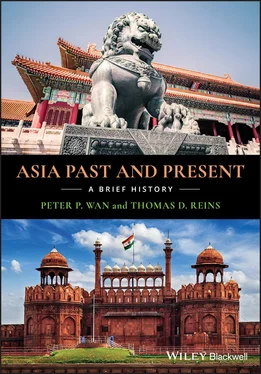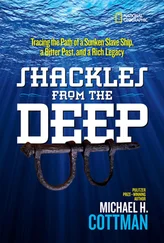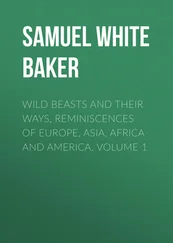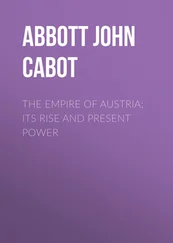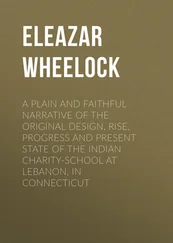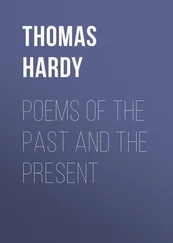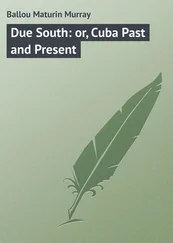People from high‐ranking officials down to the grassroots lived in constant fear of their lives. His ruthless measures, however, did result in a solid monarchy and a highly centralized and powerful government that would withstand the test of time. Throughout the Ming Dynasty, the regime was never seriously challenged by power centers beyond the throne, such as the families of the queen or empress dowager, cliques among the court officials or eunuchs, or insubordinate frontier generals.
Zhu Yuanzhang personifies a paranoid and brutal despot in the Chinese consciousness. But he was also unsurpassed in his unrelenting diligence, great talent, and bold vision in matters of government and warfare. He vigorously built schools and promoted education, and revived a robust imperial examination system. Candidates were tested not only on their knowledge of the Confucian classics, but also on their ability to apply those principles to resolve contemporary issues. Those who passed written examinations would further undergo tests of archery, horsemanship, math, and knowledge of the law.
His government again took up the arduous task of compiling registries of households and land ownership. This system was initiated in the Tang Dynasty and carried on in following dynasties to varying degrees. The registries contained detailed information on land and population, which served as the basis for determining taxes, labor service, and draft quotas. Households were organized into the “Baojia System,” a collective‐responsibility system wherein all households in a village were collectively responsible for collecting taxes, providing labor service, drafting soldiers, enforcing the law, and monitoring each individual’s behavior. An individual, a family, or a neighborhood that got on the wrong side of the law would bring penalties to the entire village.
Zhu Yuanzhang reinvigorated China’s agriculture, which had been crippled by a century of Mongol misrule and war. His government rewarded peasants with tax exemptions and farm animals for reclaiming abandoned farmland and dredging rivers. It relocated millions of people to settle in regions that had suffered radical population loss because of war, flood, and plague.
A commercial revolution was in full swing in Ming China, following the cotton revolution in the Yuan Dynasty. It began in the textile industry in the Lower Yangtze Valley, which was a rice‐growing region and known as China’s granary during the Tang and Song Dynasties. The cotton revolution offered incentives to peasants to switch from growing rice to more profitable labor like growing cotton, raising mulberry trees and silkworms, and manufacturing cotton and silk fabrics. Cotton and silk textile industries created fabulous prosperity that centered in Suzhou. Rice growing was sidelined and gradually shifted upriver, turning the middle reaches of the Yangtze River into China’s new granary. Such regional economic specialization and division of labor finally turned the Lower Yangtze Valley from a rice exporter to a rice importer.
But the producers of these cottage industries could realize economic benefits only by selling their goods and buying what they didn’t produce in the marketplace. To conduct those transactions, they needed currency. Hence, a commercialized, market‐oriented, and currency‐based economy gradually took shape to replace the earlier self‐sufficient and self‐contained agricultural economy. Silver was soon the main form of currency, and the government converted taxes, labor service, and the salaries of government officials into silver as well. Much of China was now a money society.
Zhu Yuanzhang passed his throne on to his grandson, but a son of his seized the throne, and is known as Emperor Yongle (1360–1424). One of his most memorable undertakings was the dispatch of Admiral Zheng He on seven overseas voyages along the maritime Silk Road over a 28‐year period. His fleet visited today’s Southeast Asian countries (Vietnam, Indonesia, Malaysia, the Philippines, and Thailand), the South Asian subcontinent (India, Sri Lanka, and Pakistan), the Middle East (Iran and Saudi Arabia), and the eastern coast of Africa (Madagascar, Somalia, and Kenya). He offered expensive gifts to local rulers and extolled the wealth, power, and benevolence of China and the Chinese emperor. He also did a little trading and went after a band of Chinese pirates along the way. He made friends on these voyages, and brought back precious and exotic gifts from local rulers to the Chinese emperor. One eye‐popping gift was a giraffe from Africa!
On his first voyage, Zheng He had a magnificent nine‐mast flagship that measured 151 meters in length and 61 meters in width with a carrying capacity of 800 tons. He had a fleet of 240 oceangoing vessels carrying roughly 27,800 people. The ships were of diverse design and function: to carry passengers, to carry cargo, and to fight in combat. They were armed with the most advanced cannon in the world.
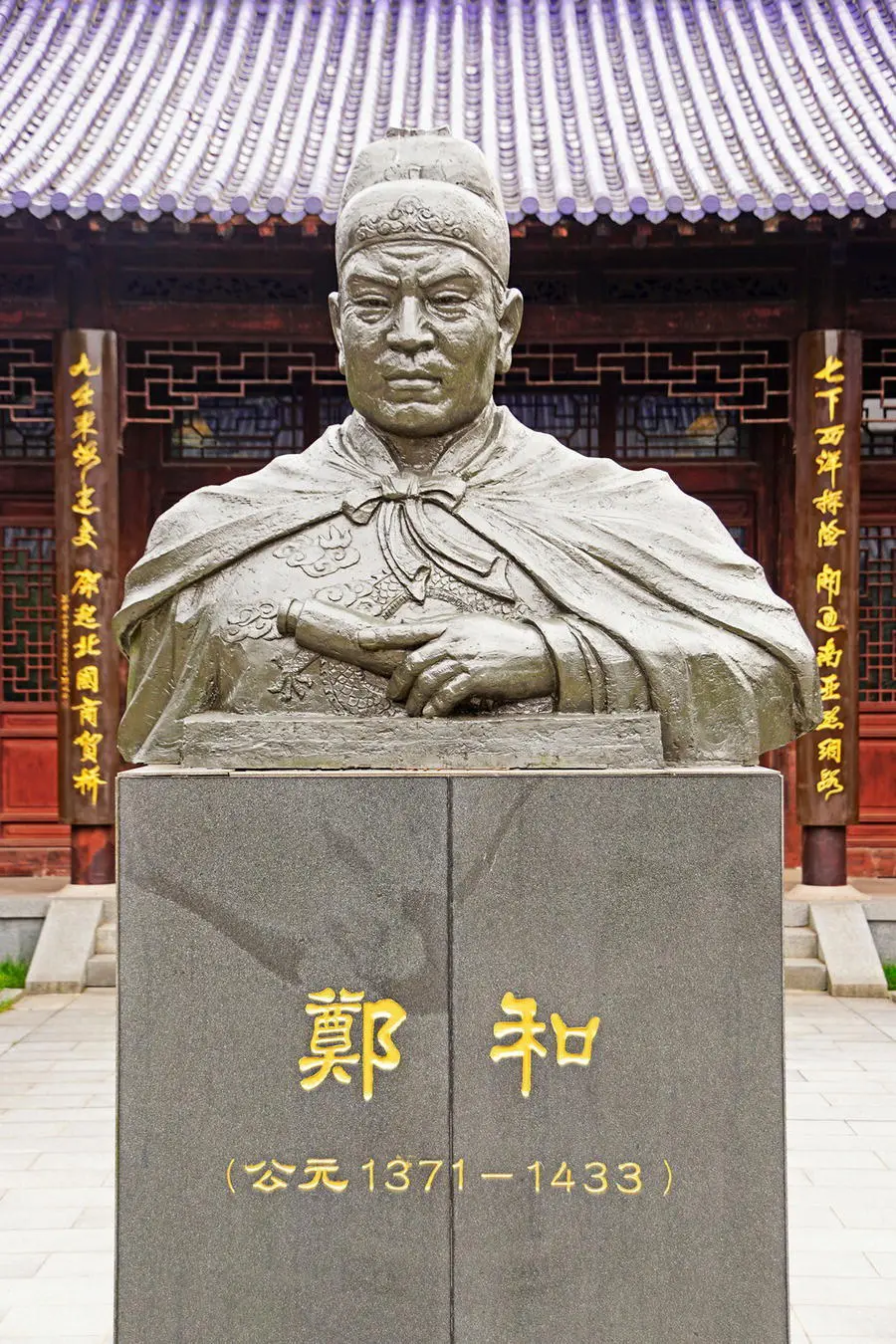
Statue of Zheng He.
Source: WGBH Educational Foundation.
It would be no exaggeration to call Zheng He’s voyages “China’s Age of Discovery.” Unfortunately, they were discontinued when Emperor Yongle died in 1424, and Zheng himself died in 1433. The next emperor not only terminated the voyages abruptly but also ordered the destruction of the voyage diaries, the data collected on the voyages, and even the docks where the ships were built. He also re‐imposed a harsh policy of “seclusion” that closed the Chinese coast to all foreign contact: Foreigners were banned from entering China, Chinese subjects were banned from leaving the country, and those who did leave were banned from reentering. Official trade with foreign countries was choked to a dribble. Private business contact with foreigners was absolutely forbidden. The “seclusion” policy held firm through the Ming and Qing Dynasties for six centuries. China’s outreach to the world withered on the vine. And except for occasional eruptions of violence, China slumbered in isolation within its borders.
The reasons why Admiral Zheng He’s expeditions were terminated pose a fascinating question. So what were the reasons behind the about‐face of policy?
1 Emperor Yongle, the initiator and backer of the expeditions, died in 1424, and Zheng He died in India in 1433 while on his seventh voyage.
2 The founding emperor Zhu Yuanzhang had issued “seclusion” orders and kept reinforcing them throughout his reign. So Zheng He’s explorations could be an aberration from the tradition.
3 Emperor Yongle’s purpose for sending Zheng He on his voyages was to extol the greatness of the Chinese emperor and extend the tribute‐trade system. Normal trade was of minor interest, and territorial conquest was never a goal. Since the expeditions brought no tangible benefits, and were not even self‐sustaining, they were indefensible against charges of being costly vainglory. (In contrast, the Western expeditions were driven mainly by the desire to reach new markets and colonize new territories. They survived and flourished on the profits, loot, lands, and slaves they acquired.)
4 Zheng He had long been a target at the imperial court. His forefathers were Muslim Arabs who had served for generations in high office in the Mongol Yuan government. When Mongol rule was overthrown, he was captured as a boy of 10, castrated, and sent to work in the household of the future Emperor Yongle. He became a close confidant to his master, helped him in his struggle to seize the throne, and was appointed Admiral of the Ming Fleet. His personal faith in Buddhism and his knowledge of Muslim faith and culture gave him a great advantage in carrying out his diplomatic missions in the lands of Buddhism and Islam. But his opponents claimed that he was unfit to command the emperor’s fleet because he was a eunuch and a Muslim.
Читать дальше
